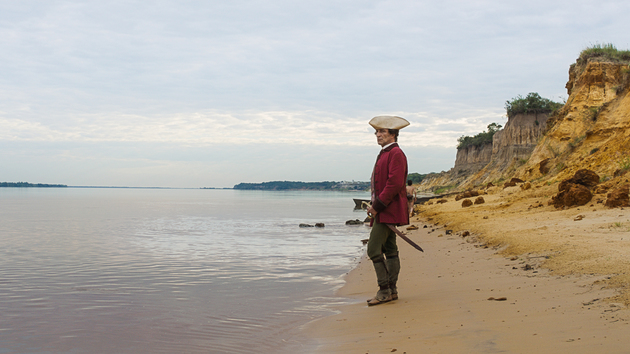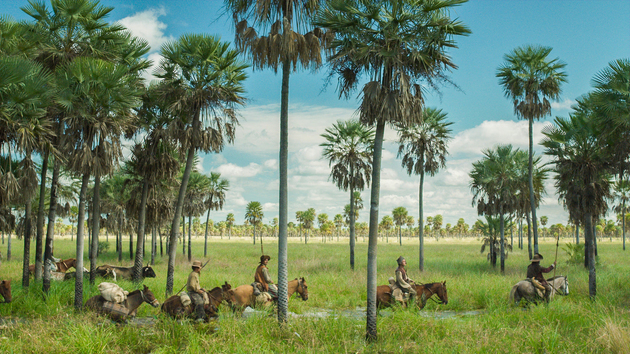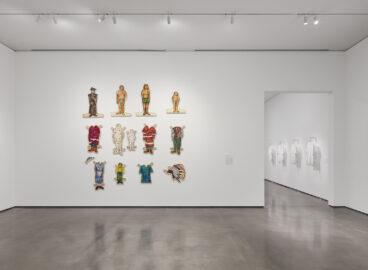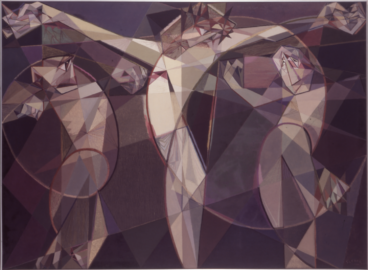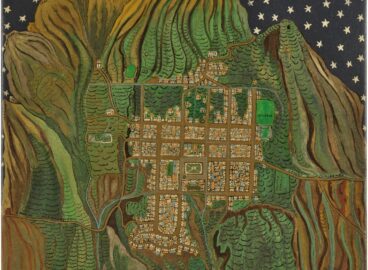In May 2019, the Argentine filmmaker Lucrecia Martel was invited by the Patricia Phelps de Cisneros Institute to give a lecture at MoMA. Martel’s first feature film, La ciénaga (2001), attracted much attention because of the tension between its powerful imagery and soundscape, its exploration of power relations as rooted in the family, and an extreme and estranged sensorial quality. The idea of this interview is to leave a written trace of her visit to MoMA, where she spoke about an alternative, sound-based understanding of time.
For the Spanish version of the interview click here.
Silvina López Medin: In the lecture you gave at MoMA, you talked about a prevailing narrative structure in which the focus is not on what’s happening in the present moment, but on what will happen. It’s interesting how the present and the future come into play in your films. For instance, the way La ciénaga and Zama take place in some sort of in-between time (vacation in La ciénaga, an endless awaiting in Zama), in which there’s an idea of the future that seems to propel the characters and whose failure is in turn exposed (in the first one, “the trip to Bolivia,” in the latter, “the transfer”). In Zama, the title character even talks about that: “I do for you what no one did for me. I say no to your hopes.” Could you talk about your approach to time and what formal elements you use to embody it?
Lucrecia Martel: When I finished La mujer sin cabeza, I started writing a script based on Héctor Germán Oesterheld’s El Eternauta, an iconic Argentine comic first published between 1957 and 1959, that tells of an extraterrestrial invasion and in which the title character voyages through eternity. This made me think a lot about time, and about the idea of the enemy. Throughout this process I came to understand a key factor in the construction of my previous films: What the future is. In Zama, this reflection on the future becomes central, and in the documentary I’m currently working on, I go deeper into meditating on that. I’m concerned about time as proposed by the hegemonic narrative, the sort that floods theatre chains and media platforms like Netflix. A kind of storytelling that assumes that you are always outside the present moment, that you are watching the scenes thinking about what is going to happen instead of what is happening. This narrative model considered to be natural, inherent to humanity, dismisses as intellectual any attempt to move away from the dramatic arc, the hero’s journey, the conclusive ending, the need of protagonists and antagonists. It’s not the narrative model itself that’s dreadful, but its preponderance, its hegemony. If this system’s idea of time hadn’t been so meekly assimilated as the faith in the future that the economy that governs us requires, as the underlying Judeao-Christian teleology, I wouldn’t be worried. In order to get into debt, you need to believe in the future. In order to consume unnecessary things, you need to believe in the future. And such a future is an invention falling apart. Too many people suffer from it. This small planet is harassed by that blind future. The present moment has become something annoying which we must record as a selfie or as an Instagram story that will disappear within 24 hours. This sounds like the apocalypse, but it’s not. The body, this doubtful organism that we are, wants to live. And the body is pure present. Hunger is pure present. Poverty is pure present. Pain doesn’t allow for a future. At least not the future fostered by the hegemonic narrative, one multiplied through platforms and theatres in order to tame our idea of time. A white, middle-class future, resigned to two weeks of vacation.
SLM: In contrast, in La mujer sin cabeza the focus is on the past, or rather, the denial of the past, and how the past ends up showing up, leaving its marks. When the protagonist hits something on the road, she doesn’t look in the rearview mirror, and, at the same time, on the car window, a handprint, almost transparent, becomes visible. The film is from 2008, but it has a sort of eighties aesthetic—and what’s more, the ending song, “Mamy blue,” is from the seventies. Through that aesthetic choice, did you intend to set the film closer to the last Argentine dictatorship?
LM: The aim of that film was to set the audience up to experience complicity. The idea of complicity is a much more interesting one than that of an enemy. Because complicity does not necessarily imply a negative aspect like enemy does. It simply implies that we share certain objectives. Complicity doesn’t require guilty parties, it suggests an equal distribution of responsibilities, so subtly that nobody in particular needs to feel remorse. It forces you to forget. It forces you to be part of the flock. It forces you into a tiny happiness. If you put it into practice daily, it ends up taking over your life. Being responsible is a liberating act, a human potentiality. Guilt is exactly the opposite. That’s why complicity is a necessary balm. The dictatorship was a feast of complicity.
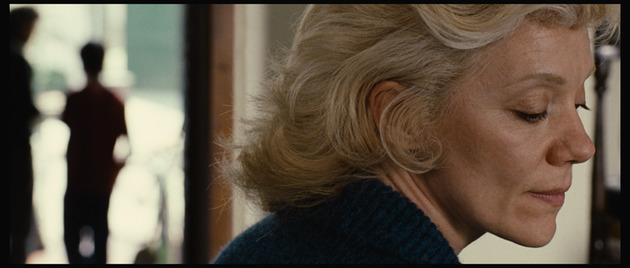
SLM: Is the time lapse between your feature films (2001, 2004, 2008, 2017) connected to your conception of time itself? What’s the role of error, chance, and failure in your creative process? You mentioned, for instance, that before Zama you had been working for a long time on a project on El Eternauta, which didn’t come together in the end (a fact that connects thematically with Zama).
LM: I think we are used to traveling, to planning itineraries, but not to shipwrecks. I try to think of failure as an unexpected blessing. It’s not easy. That which is ambiguous, unspoken, contradictory, strange, belongs to an intermediate field between being committed to getting somewhere and being terrified of a wreck. That’s where I have been able to build my work.
SLM: Your lecture at MoMA was called “To Contest the Deafness of the Gaze.” It brings to mind a phrase by Pascal Quignard: “It so happens that ears have no eyelids.”1Pascal Quignard, “It So Happens That Ears Have No Eyelids,” in The Hatred of Music, trans. Matthew Amos and Fredrik Rönnbäck (New Haven, CT: Yale University Press, 2016), 71. Is the relation between sound and body connected to your conception of cinema as an immersive experience? Was there anything in particular that drew your attention to sound? In Zama, you seem to be going deeper into your exploration of sound. Vicuña Porto’s cut-off ears could be thought of as a metaphor for that.
LM: Sound is a means of thinking about a model of time that avoids the conventional straight arrow version, like a ray of light, inescapable. Time running forward seems to be very much related to the privileging of sight over our other senses. The future is further ahead and that’s where we are going. And if we are not going there, it’ll come to us anyway. We are so afraid of death because we are so centered on the future. The direction of the arrow also marks that: there, not here and now. We could imagine a model of time based on sound. The listener is immersed in a sea of waves spreading in all directions. A time scheme based on listening immediately implies a volume, a range. Sight provides a lot of information in an instant, hearing requires more time, sound needs duration. A model of time based on listening would destroy tourism, selfies, and gyms.
SLM: We have talked about time. Now regarding space, in one of the first scenes in Zama, someone talks about a kind of fish that “you’ll never find in the middle of the river, but always near the banks.” That made me think about the places where you choose to set your films, and in a broader sense, about an ars poetica.
LM: I think it is. I try to move in the margins. Being a woman, gay, Latin American used to help, it doesn’t so much anymore. Being white and not having experienced what it is to lack all kinds of protection quickly places you in the middle of the river. I believe in slowness, in repose. I wouldn’t want to appear nice and quiet. There are leeches and rays in the margins, too. In my films I prefer characters that want to be good, but aren’t willing to lose, not even their washing machine. Like myself.
SLM: How did you get your start in the film world? You also began by pursuing Social Communication Studies. What made you dedicate yourself specifically to filmmaking?
LM: In the mid-eighties in Argentina, cinema seemed to be a possibility for political participation. The military dictatorship had just ended. I came from a provincial Catholic school that imagined itself as the cradle of the elite. Public university was an oasis. I never thought I’d become a filmmaker; I wanted to be a scientist. I think that the pleasure of oral storytelling, of telling tales, brought me to cinema.
SLM: And in relation to your personal transition to cinema, what guided your adaptation of Antonio di Benedetto’s novel, Zama, into a film?
LM: If I were to lead a workshop on literary adaptation for film, I wouldn’t know what to do. It would be more like an intensive care unit filled with people infected with a book, one that they don’t really understand, but that made them happier; people with an urge to live. Di Benedetto’s language in Zama is something that science will unravel one day, one very distant day. I’m sure that the key is in its language, not in the plot.
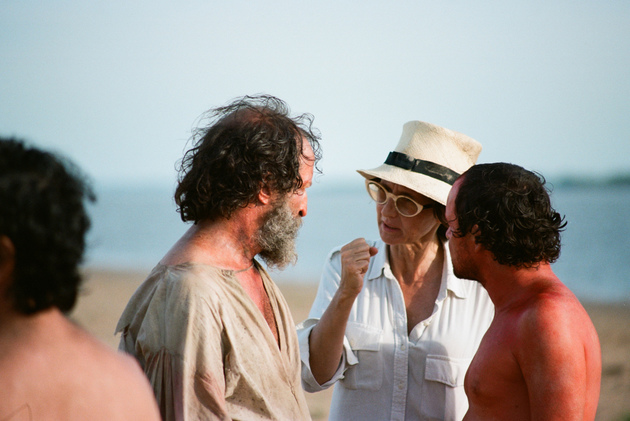
SLM: What discoveries do you find essential in your training?
LM: It was key to understand that it was necessary to remember certain things. As I was learning to read, I was conscious of the world I was leaving behind. I memorized that moment. Specifically, the letter e. I come from a family with many siblings. You couldn’t have your own private space, except at night. Anything you do while children are asleep seems forbidden. To me reading was a clandestine act. I would hide a sort of herbarium in which I would tear garden plants apart, convinced that I would discover something. That protoscience was a key element, my diary. As a teenager, I abandoned my idea of studying physics, which had been my sole vocation, a truly literary one.
SLM: You spoke about “how altering perception implies both obeying and disobeying the prevailing time system,” and about “organizing perception.” In what ways do you do that in your films?
LM: You have to make believe that you are going one way and then not go there. Create stopping points. Destabilize the framing in an unpretentious manner. Avoid images that are easily translated into one word. Disrespect the narrative structure of familiar spaces: home, bedroom, garden, car. Try to use sound to weaken the relationship between an image and its referent. Betray expectations. Manage those betrayals. It’s all easy, but you have to train yourself.
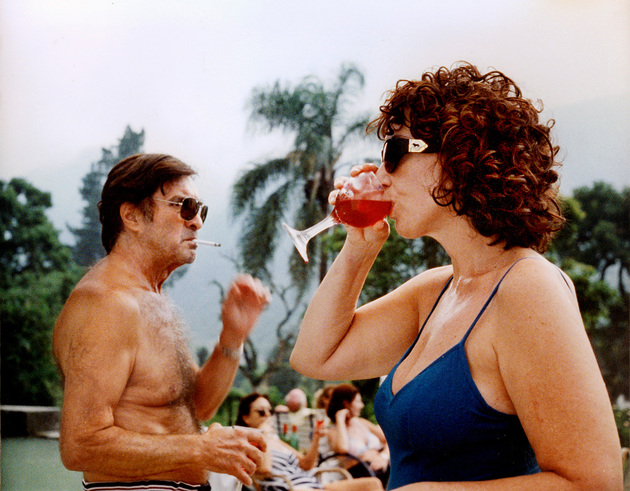
SLM: Your films expose the repetition and rigidity of power relations and at the same time they break them, opening space for ambiguity, blurring divisions. For instance, in La ciénaga, the employers repeatedly and gratuitously blame Isabel, their domestic helper, for the missing towels. At the same time, your films break these apparent divisions. The adult world is constantly invaded by children or animals running around, there are insinuated and concrete relations between cousins, or siblings, or between people from different social classes. In La ciénaga, this gesture toward destabilizing appearances seems to be embodied in what does not work perfectly: The power going out, the rusted folding chairs around a dirty pool, bodies lying in shared beds or falling or moving as if always about to fall. There are also several images that seem to refer to a sort of piercing of what is fixed: Mercedes Morán’s character hitting a nail on the wall that separates her property from her neighbor’s, or Juan Cruz Bordeu’s crossing the border of the shower curtain with his foot while his sister is showering.
LM: Whenever you manage, through cinema, to cast doubt on the assumed nature of things, you might be approaching something really interesting. This is not obligatory, but it’s one of the highest aims to which language may aspire. And when you have done that once, there’s no way back. Because once you become aware of what makes no sense, never again can reality manage to completely hide its quality of disguise.
SLM: How do you think about and organize those different worlds when writing a script?
LM: A script is a distillation of a long process of emotional disintegration. With several drops of humility because I’m not going to get much further from myself anyway.
SLM: The blurry line that separates one thing from the other, from the unknown, that which is different, is also connected to desire and fear. In La ciénaga there’s the story of the “rat dog,” the child with the strange “extra tooth,” the barking of the dog next door that the child fears and feels attracted to, even the name of Isabel’s boyfriend, who belongs to “the other class,” is “Dog.” In La niña santa there are horror stories circulating. Your films themselves could be thought of as some of those stories, “the child who peeps at the dog over the wall and dies,” “the child who only days later is found dead on the road,” and so forth. What is horror to you and how are you interested in capturing it in your films?
LM: Horror is not admitting that reality is a disguise. That we are capable of much more. Horror is not bearing the responsibility of inventing a world. It’s more soothing to be a creature than to be a god.

SLM: Identity is also a very present concern in your work. It’s already in the names of the characters. In La ciénaga, Mercedes and Mecha, not only share a name, but also share men: at some point they were Gregorio’s wife and lover respectively, and then they are José’s mother and lover. In Zama, Ventura Prieto takes roles that Zama hopes so much for: he’s the lover of the woman the other desires, he ends up being transferred to the place the other longs for. The questioning of identity is taken to an extreme in Vicuña Porto’s words. “The Vicuña Porto they talk about does not exist. It’s not me nor nobody else. It’s a name.” How do you build and name your characters?
LM: Yes, it causes confusions in the dialogue, confusions that are very revealing. In my city, there are generations over which a name is repeated countless times.
SLM: You are working on a project about the murder of Javier Chocobar.2Javier Chocobar, a member of the Diaguita community Los Chuschagasta in Tucumán, was murdered on October 12, 2009 while fighting against the removal of his Indigenous community from their ancestral land. In 2008 a businessman, who wanted to occupy the land by force, and two ex-policemen were found guilty of the crime. See Carlos Rodríguez, “Ahora puede descansar en paz” [“May He Now Rest in Peace”], Página 12, October 28, 2018, https://www.pagina12.com.ar/151543-ahora-puede-descansar-en-paz. What was it that interested you about working on a documentary and particularly about this subject matter?
LM: Many things. Without a doubt, this is the most difficult thing I’ve done so far. It’s about the brazen demand made by the State to indigenous people for them to prove that they are really indigenous, precisely when the proofs they ask for have been destroyed over the course of these 500 years. About how the Spanish people, and later the creoles, don’t need to answer for their purity. About the evolution of land ownership and the history of depiction in artworks in northern Argentina. There are many threads.
SLM: You’ll be jury president of the Venice Film Festival. What are you interested in finding in other people’s films?
LM: I want to see the spark I’ve talked about, in which the veil is lifted for a second and you recognize the absurdity of the world. In that instant there are painful things that become banal, and trivial things that become unbearable. It’s a moment of epiphany, one that undermines reality and all the duties it imposes on us. I don’t care about the genre, cinematography, not even the acting, or the soundtrack, let alone the plot. Those are all minor aspects that you need to talk about when the spark doesn’t happen, the one that makes a movie never end. You will carry it with you forever. It’s a very personal experience, and that is why there need to be many people on a jury. But what’s interesting about that spark is that, when it happens, it cannot be denied.
Translated from Spanish by Silvina López Medin.
- 1Pascal Quignard, “It So Happens That Ears Have No Eyelids,” in The Hatred of Music, trans. Matthew Amos and Fredrik Rönnbäck (New Haven, CT: Yale University Press, 2016), 71.
- 2Javier Chocobar, a member of the Diaguita community Los Chuschagasta in Tucumán, was murdered on October 12, 2009 while fighting against the removal of his Indigenous community from their ancestral land. In 2008 a businessman, who wanted to occupy the land by force, and two ex-policemen were found guilty of the crime. See Carlos Rodríguez, “Ahora puede descansar en paz” [“May He Now Rest in Peace”], Página 12, October 28, 2018, https://www.pagina12.com.ar/151543-ahora-puede-descansar-en-paz.

